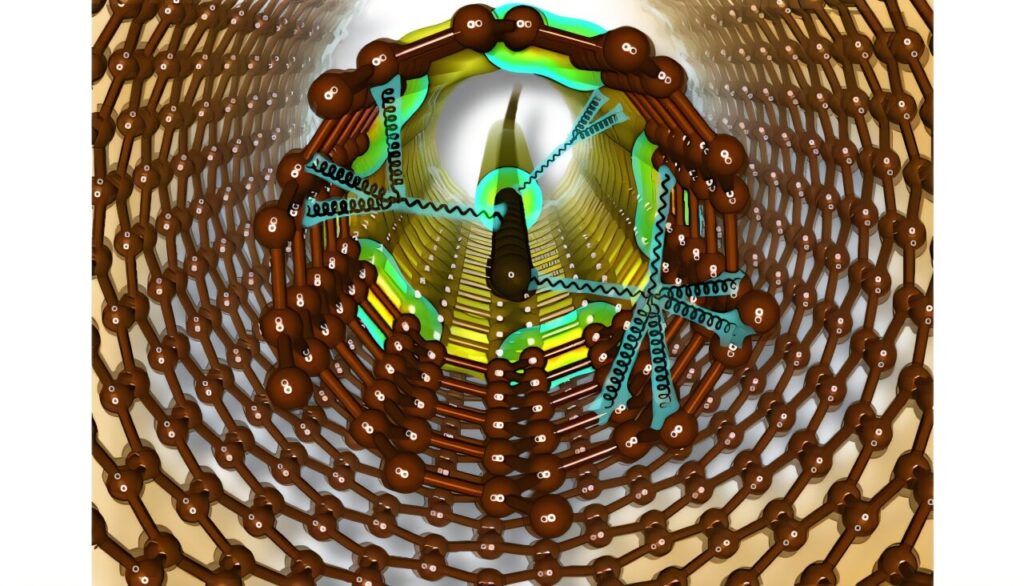For the design of future materials, it is important to understand how the individual atoms inside a material interact with each other quantum mechanically. Previously inexplicable vibrational states between carbon chains (carbyne) and nanotubes have puzzled materials scientists.
Researchers from Austria, Italy, France, China and Japan led by the University of Vienna have now succeeded in getting to the bottom of this phenomenon with the help of Raman spectroscopy, innovative theoretical models and the use of machine learning. The results, published in Nature Communications, show the universal applicability of carbyne as a sensor due to its sensitivity to external influences.
For the design of future materials, it is important to understand how matter interacts on an atomic scale. These quantum mechanical effects determine all macroscopic properties of matter, such as electrical, magnetic, optical or elastic properties. In experiments, scientists use Raman spectroscopy, in which light interacts with matter, to determine the vibrational eigenstates of the atomic nuclei of the samples.
Nine years ago, Thomas Pichler’s research group at the University of Vienna succeeded for the first time in stabilizing carbyne, a linear chain of carbon atoms, in carbon nanotubes to the surprise of the scientific community.
Carbyne, which has so far only been found in a tube, has controllable electronic properties, essential for semiconductor technology, and could be the strongest known material in terms of its tensile strength. In their experiment, the team observed an unexpected system state that did not match the common explanatory model and was completely misunderstood at the time.
The researchers have now taken a closer look at this inexplicable system state. Using an innovative theoretical model, which could only be applied thanks to recent breakthroughs in machine learning, they were able to find an explanation for the novel interactions between the chain and nanotube observed in the laboratories, which initially seemed paradoxical.
“Although the chain and the nanotube are electronically isolated and therefore do not exchange electrons, they are subject to an unexpectedly strong coupling between the vibrations of the two nanostructures,” explains Emil Parth from the University of Vienna, lead author of the study.
In other words, the carbyne and nanotube talk to each other electronically, while at the same time they are electronically isolated in the classical sense. This quantum mechanical coupling of vibrations is usually negligible, but in this particular case it is outstandingly strong due to the intrinsic electronic properties and structural instability of the chain.
This is what makes the chain so interesting, as it reacts strongly to external influences. It therefore interacts strongly with the nanotube surrounding it. The new study shows that this interaction is surprisingly not one-sided, as the carbyne also changes the properties of the nanotube, albeit in a different way than previously assumed.
“The sensitivity of carbyne to external influences is crucial for its potential application in future materials and devices as a contactless optical sensor on the nanoscale, for example as a local temperature sensor for heat transport measurements,” concludes Pichler, head of the research group at the University of Vienna.


